What’s happened to fashion’s personalities?
 As the gavel came down in New York, and the memorial service ended in London, fashion said goodbye to two of its biggest and most recognisable personalities.
As the gavel came down in New York, and the memorial service ended in London, fashion said goodbye to two of its biggest and most recognisable personalities.
The Collection of André Leon Talley, one of Anna Wintour’s most trusted editors at American Vogue, featuring artworks by Warhol - Talley worked at his magazine, Interview - and ALT monogrammed luggage (lots of it) was sold by Christie’s in New York. Talley’s larger-than-life character and presence, not to mention his kaftans and fur, made him an instant fashion celebrity. On first name terms with the world, the collection smashed estimates, fetching nearly $1.4 Million.
In London, the grand dame of British fashion, Vivienne Westwood, was remembered at a memorial service at Southwark Cathedral. Kate Moss, Victoria Beckham and many others, turned out to pay their respects to somebody whose image and anarchic actions were bigger than her brand.
These are just two of the many big personalities the fashion industry has lost recently and doesn’t seem to be replacing. On a domestic UK level, the industry just lost Hilary Alexander, a well known UK fashion editor famous for working at The Daily Telegraph who was recognised from catwalk to TV.
It could be a sign of our bland and boring times, but people just aren’t standing out?
There was time when you would recognise all of the front-row editors and designers just from a silhouette. People like Karl Lagerfeld, Donatella Versace and Anna Wintour catwalked out of the fashion bubble and into popular culture. Imagine if they made another Zoolander today, who from the last ten years would be in it?
These people are questions in quizzes. These are people you’d dress up as for Halloween. Love them or loathe them, they were/are ridiculous. That’s why people remember them.
People get away with a lot less today. Bad behaviour or diva-antics won’t be tolerated anymore and we’ve lost the personalities to go with it. Everything has become a single note. Today’s fashion editors are too busy juggling multiple publications to perfect their image or standout for either the right or wrong reasons. Even Condé Nast is leaving its historic Vogue House on London’s Hanover Square in 2024 while busily amalgamating many of its issues to run with fewer or less influential editors. Remember Carine Roitfeld or Franca Sozzani?
Models are dropped after one season and designers either struggle to make it under their own name or are dismissed the minute sales start to slow at corporate-owned fashion houses.
The irony is that social media hasn’t made new fashion industry people anymore visible. Everybody has become so disposable they haven’t time to make themselves known. They’ve become as throwaway as fashion itself. It’s as though they have been crowded out by all the other noise and each other.
One the ultimate fashion personalities, Karl Lagerfeld, who passed away in 2019, will be remembered with his own show at the Metropolitan Museum of Art in New York this summer when ‘Fashion Christmas’ arrives on the first Monday in May at the Met Gala.
This is the ultimate accolade for one the fashion industry’s biggest personalities. From his black fan to his Georgian bun to Choupette, the most pampered cat in the world, it’s the ridiculousness that we all love and embrace. When this new show - A Line of Beauty - opens, the red carpet will be a tribute to this giant of a personality who became a caricature of himself. Larger than the brands he worked for - Balmain, Patou, Chloé, Fendi, Chanel - he lives on and will only get bigger through this.
While you wouldn’t necessarily wish to be around many of these fashion egos on a daily basis, it created a set of characters that transcended the industry and took fashion out into the wider world. It made ‘fashion' bigger. An often lampooned collection of individuals who stood out from all the rest, the world is a poorer place without this pantheon of personalties.
Diet Coke, anybody?!
More and more people are choosing to play games on their phone
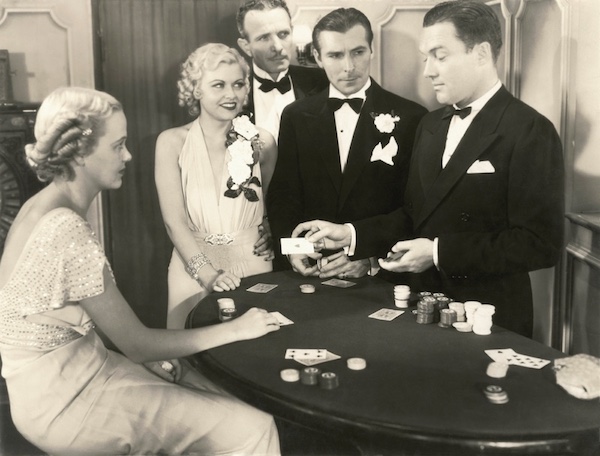 Mobile devices have revolutionized more than just our everyday lives. They have influenced the development of many industries, including the gambling market. Fans of cash games no longer have to leave the house and go to a land-based casino to feel the excitement of their favorite pastime. What's more, they can always take their favorite games with them and play them on the go too.
Mobile devices have revolutionized more than just our everyday lives. They have influenced the development of many industries, including the gambling market. Fans of cash games no longer have to leave the house and go to a land-based casino to feel the excitement of their favorite pastime. What's more, they can always take their favorite games with them and play them on the go too.
The best mobile-friendly online casinos rated allow you to enjoy smooth gameplay. They offer a large selection of games, attractive bonuses and convenient payment options. It is no surprise that more and more players are moving away from playing at land-based casinos and those available on a computer, in favor of mobile casinos that are launched with the touch of a button.
The digital age has changed the gambling industry
Casinos are no longer associated with smoky, dark rooms frequented by gangsters or only elite players. You don't need to know tricks such as card counting or be a professional poker player to win. Gambling manufacturers have made it as simple as possible to operate real-money games. It is not uncommon to only need to select a bet amount and press one button to start playing.
The casino industry has been quick to realize how big a role smartphones play in providing entertainment. Although the first mobile casino games were created in the early 2000s, it was not until the era of smartphones and access to high-speed internet that they moved to the heights of popularity.
Players can download the apps of their favorite online casinos to their device or launch a mobile browser, type in the casino address and start playing. This form of entertainment has become so popular that many gambling software manufacturers first develop their products to fit the requirements of mobile devices, before porting them to larger computer and laptop screens.
Why are mobile casinos so popular?
Mobile casinos attract millions of players from all over the world. No wonder - most smartphone owners spend up to several hours a day scrolling through the news, using social media, watching movies, listening to music or playing games. The opportunity to try their luck and enjoy a burst while on public transport, while waiting in a queue, or just a sudden urge for a quick round of their favorite game while lounging on the sofa is one of the biggest magnets that attracts players to mobile casinos.
Mobile casinos are able to attract more players with their offerings. All, thanks to easy access to games, instant payments, and promotional offers, in the form of free gaming credits. Players no longer have to think about how to get to a land-based casino, they don't even have to sit in front of a large computer screen. Their favorite games are always at hand. Regardless of where they are at the moment.
Modern real money games
Real money mobile games impress with their quality and perfectly designed graphics, animations and sound. The ease of use and the chance to increase one's gaming balance with random wins further enhances the excitement of the game. What's more, players have a full range of gambling entertainment to choose from.
Slot machines are the most popular choice of most players. Progressive jackpot games and table games are equally high on the popularity scale. There is also something for betting fans, who constantly follow the match schedules of their favorite teams and place bets on the results of games. The icing on the cake are the state-of-the-art live casinos. When playing in live mode, the entire game is broadcast from a studio with a real dealer. Players can chat with him or her and watch exactly what is happening in the game.
Fragrance’s New Bold Choices
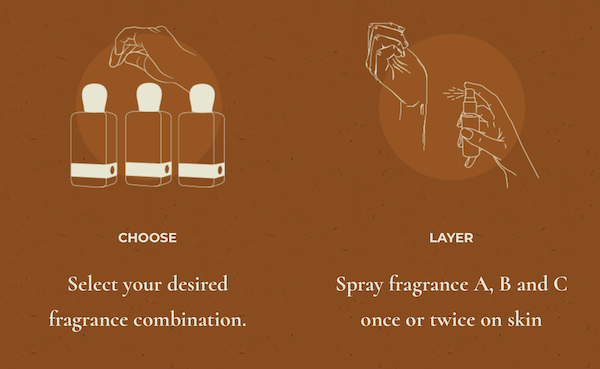 The fragrance industry has had a tough couple of years. The pandemic dented our need and desire for fragrance, while, in many cases, literally taking away our sense of smell.
The fragrance industry has had a tough couple of years. The pandemic dented our need and desire for fragrance, while, in many cases, literally taking away our sense of smell.
The category was in decline even before the pandemic and was one of the hardest hit with consumers reduced the usage of beauty products deemed non-essential.
Now, feeling like ancient history, fragrance is back IRL and people are being a lot more bold in terms of perfume choices, not necessarily choosing what they have always worn.
The pandemic was like a restart button, deleting people’s scent history and fragrance companies and brands are further harnessing this desire by entertaining customers in store such as allowing the blending and layering of fragrances.
Nicola Pozzani, Creative Director at Mavive Group, owner of The Merchant of Venice and many other fragrance licenses says, “People are getting more knowledgeable and conscious about what they buy. The desire to embark on an emotional journey is still the same. Maybe bigger than before actually.” he says.
Pozzani says the trend has been driven by a desire for more variety with the advent of niche fragrances and the influence of the Middle Eastern market. The internet too has played a big role giving space for debate and knowledge sharing alongside lots of initiatives around education in fragrance.
The Merchant of Venice has launched a new concept called ‘Accordi di Profumo’, an innovative collection of eight ‘Nature-Conscious’ Eau de Parfum, of exceptional olfactory quality, created in an exclusive partnership with Givaudan, a leading fragrance manufacturer.
The sustainable and responsibly sourced ingredients of the eight fragrances are equally divided into the four main olfactory families, each characterised by an evocative colour: green for the fresh citrusy Bergamotto Italia and Arancia Brasile, pink for the delicate floral Tuberosa India and Neroli Marocco, orange for the warm ambery Tonka Venezuela and Zafferano Iran, and finally, brown for the deep woody Patchouli Indonesia and Sandalo Australia. The boxes are made of biodegradable paper obtained from algae.The olfactory purity offers the concept of layering, to create a made-to-measure perfume directly on the skin, with its own unique nuances and facets.
“The Merchant of Venice celebrates iconic perfumery materials which were popular during the Serenissima times when these would come from the Middle and Far East.” says Pozzani. “Our (in-store) Brand Ambassadors are story tellers who celebrate Venetian Perfumery Art through uncompromising passion and knowledge of the culture which informs our luxury products. From interesting historical facts all the way to layering fragrances they share they embody the spirit of Venetian perfumery.” he says.
Illustrating and giving consumers permission to layer also increases sales opportunities.
Recent data from the NPD, an American market research company, Fragrance Consumer Study, found 74% of fragrance purchasers bought in-store, where there is a greater ability for hands-on testing and sampling and 70% of fragrance consumers are willing to pay more for a higher-concentration, longer-lasting fragrance. The report also found that fragrance is outperforming other segments, with Q3 (2021) revenues not only up year-on-year but also increased by a whopping 38% versus pre-pandemic 2019.
Dariush Alavi, Editor, Persolaise.com & Author, Le Snob: Perfume, a guide to the world of fine fragrance, says, “People are trying to be more adventurous, I’d say it’s because they are trying to create a very definite boundary between current times and the difficulties of the last two years.
“During the various lockdowns, many people didn’t wear a lot of perfume, they scented their homes with fairly neutral-smelling candles, they tried to make the environment around them as serene as possible. Now, serenity has been thrown out of the window, and some people want scents that will help them assert their presence a bit more. A perfume that says: 'I may have been hidden away for the last few years, but I’m back now, and I want the world to know.’” he says.
Alavi believes there is a wider sense that people want to use the opportunity to break out of old routines and that people are questioning why they always kept doing the same things they did, day-in, day-out, whether it was their jobs, their relationships and even their clothes and perfumes. “It’s as though the pandemic was a giant reset button.” he says.
“I hope brands use the current situation as an opportunity for a reset as well. It’s time they started releasing more polarising pieces of work, because they’re the ones that stick in people’s minds and stand the test of time.” he says.
Mintel’s The Future of Fragrance Market Report 2022 says live selling gives fragrance brands a means to connect with and educate consumers, while providing entertainment, creating emotional stories and increasing sales. The report says “further integration of wellness-centric elements, such as functional benefits, will attract consumers who are eager to care for their emotional, cognitive, and physical health. Tapping into wellness trends and focusing on value for money could be potential areas for innovation in fragrance, helping people create bespoke scents and promoting eco, natural and ‘free from’ merits.”
Fragrance help lift and enhance moods, it can also bring back memories of happier times. People want to make new, positive memories and fragrance is a potential outlet for that. Memories are mostly made out of the home.
The vast majority of fragrance is still bought in-store. The opportunity to entice footfall into stores and hold their attention will see marketing budget spent in this area. Today, people want more than fancy packaging or well-lit counters. Linking fragrance to wellness, self-care and sustainability will be the way forward for many brands and will also help consumers struggling with the cost of living to justify the price tags.
Read more expert ChicGeek Comment - here
Buy TheChicGeek's latest book FashionWankers - HERE
Check out TheChicGeek's new shop of fabulous plants & books - Give me Penis Cactus!
Full Charge Ahead The Retailer/Landlord Opportunity of EV Charging
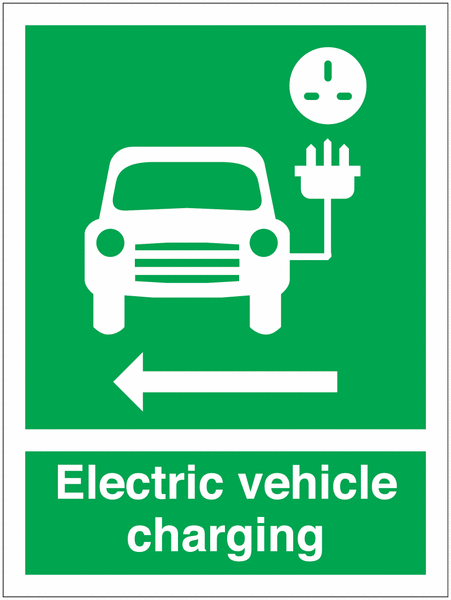 Sales of fully-electric new cars have risen from fewer than 1,000 in 2011 to nearly 100,000 in the first five months of this year. The demand is huge and with sales of petrol and diesel cars set to end by 2030, it will become even greater.
Sales of fully-electric new cars have risen from fewer than 1,000 in 2011 to nearly 100,000 in the first five months of this year. The demand is huge and with sales of petrol and diesel cars set to end by 2030, it will become even greater.
In 2021, more battery electric vehicles (BEV) were sold than over the previous five years combined (2016-2020), with 190,727 registrations (11.6% of all new car sales), while plug-in hybrid electric vehicle (PHEVs) made up 7% or 114,554 cars.
To offer context and the size of the market, there is estimated to be 32.7 million cars in the UK and over 8350 petrol stations in the UK currently.
This EV revolution could be a boon for retailers and landlords. Shopping centres and retails parks have the opportunity to not only entice shoppers their way by easy and plentiful charging facilities, but to also benefit hugely from the multiple visits and dwell time created by charging electric vehicles. Depending on the costs of installation and electricity, they could even make a profit as a supplier.
Ample EV charging facilities are a huge opportunity for retailers and shopping centres owners to gain a head start on competitors by tapping into the demand for charging and also banish ‘charge anxiety’.
Places like Bluewater and Bicester Village should be installing vast banks of chargers for electric cars to encourage visitors, both near and far. People with electric cars will choose where to go on who has the most, best and reliable chargers and will spend time there while their vehicle is charging. So, what are they waiting for? (pun intended).
Joel Teague, CEO Co Charger Ltd, helps people who can’t install a charger at home, charge minutes away from home. Co Charger Hosts rent out their chargers, helping neighbours charge and encouraging everyone to swap to an EV more quickly.
He thinks if people are going to switch to EVs they need an option that’s dependable, convenient and affordable. “We already have over 400,000 charge points in the UK – it’s just that 90% of them are private and vastly under-utilised.” he says.
Many people cannot install a private charger at home. Research by Connected Kerb puts it at well over 50% of UK motorists – 15m – because there are those who have a rented property or where the electrical system can’t support a charger, or where the parking space is located where you cannot run a power line.
Range anxiety has been replaced by charge anxiety in recent years. “Now, ‘Charge Anxiety’ is more commonly used, as this takes in concerns over whether you can find and use a charge point that’s working and available.” says Teague.
“If we’re talking about base charging then it’s a bit like asking ‘how long does it take to charge a phone?’: the answer is, 'Who cares if I’m asleep or getting on with my life while it’s doing it?’.” says Teague. “In practice it’s about 6 hours per week, but with home or community charging the only time spent is plugging it in – it’s actually a lot quicker than fuelling a conventional car.” he says.
Retailers fall into the ‘destination’ charging category. “There are two options here: either offer it for free to attract more customers, or monetise it.” says Teague. “The latter has a high up-front cost because payment systems are generally expensive and the chargers themselves need to be high wattage (at least 22kW) to make it worth plugging in for a short time.” he says.
Teague says EV owners will tend to prioritise destinations where they can charge if that destination is too far away to make the round trip comfortably on a single home charge. “So when a city or town council is planning for public EV chargers they should be aware that they are not really catering for their residents; it’s the visitors that will use them.” he says.
It typically costs £5000 to install a slow-fast charging point and £85,000 for a rapid or ultra-rapid charger.
Shell recently opened its first EV charging hub in the UK in Fulham, London, where petrol and diesel pumps at an existing fuel station were replaced with ultra-rapid charge points. A global pilot, this is the first time the company has converted one of its existing sites to cater solely for electric vehicles. The Shell Fulham features nine high-powered, ultra-rapid 175kW charge points which can charge most vehicles from 0-80% within 10 minutes – three times faster than more widely used 50kW rapid chargers.
The hub includes a comfortable seating area, free Wi-Fi, a Costa Coffee cafe and an extensive Little Waitrose & Partners. In July 2021, Shell announced that up to 800 Shell electric vehicle charging points would be installed in as many as 100 Waitrose sites across the UK by 2025 and it will install a further 100,000 public electric car charge points in the UK by 2030, 11,000 of which will be DC fast chargers, the remainder AC chargers for overnight recharging.
Jennie Colville, Head of ESG and Sustainability at Landsec, owner of Bluewater shopping centre in Kent, says, ”Installing more EV charging points across our sites is an important part of our wider strategy to support the sustainable choices of our guests, as well as our business.
“In total, we have over 300 EV charging points within our portfolio, with more planned for installation later this year. For example, at Bluewater in Kent, we recently expanded the number of charging points available, bringing the total to 63.”
Bluewater says the average visitor returns 27 times a year. When consumers become more familiar with charging their cars, the types of chargers and cost will become more important.
This month, at McArthurGlen Designer Outlet shopping centre in York they expanded their EV charging station. Run by RAW Charging, eight dual chargers are now available at the site and have been upgraded to a maximum of 22kW with the ability for 16 vehicles to charge simultaneously at the site.
Paul Tyler, centre manager at McArthurGlen Designer Outlet York, said: “We know that more and more people are using electric or hybrid vehicles, so giving customers the option of reliable and affordable onsite charging during their visit was important to us and we’re looking forward to seeing them being used.”
The government wants a tenfold increase in UK charging points to 300,000 by 2030. A typical electric car (60kWh battery) takes just under 8 hours to charge from empty-to-full with a 7kW charging point. Most people’s charging will be about topping up, unless on a longer journey, but this has huge opportunities for coffee shops, hairdressers, nail bars and supermarkets, not mention other retailers.
‘Destination’ charging is also a huge opportunity for out of town retailers and landlords who have probably seen a drop in visits due to the current price of petrol.
Landlords with generous EV facilities will become more attractive to retailers as well. They will be able to charge a premium if they can demonstrate the demand created. The typical dwell time for consumers is between 20-40 mins, but will depend on how strong the charger is and how much is needed. This time is a huge selling opportunity.
The EV charger is currently seen as a nice ‘green’ add-on to the car park. Soon it will be a necessity and the demand of millions and millions of cars will prove what an attraction that electric plug is. It’s time for retailers and landlords to charge ahead.
Read more expert ChicGeek Comment - here
Buy TheChicGeek's latest book FashionWankers - HERE
Check out TheChicGeek's new shop of fabulous plants & books - Give me Penis Cactus!
ChicGeek Comment - Made For Resale
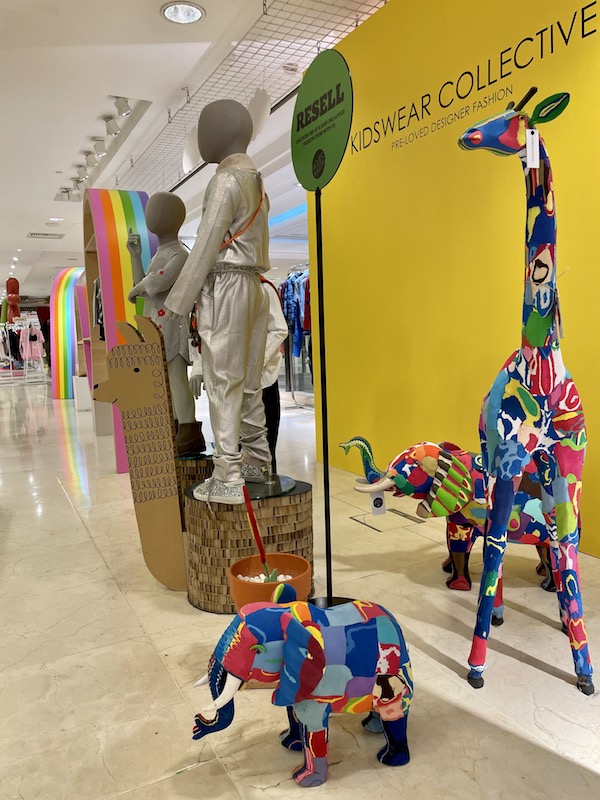 The secondhand, resale and pre-loved market is booming. Recent research from eBay Ads UK found, from a survey of 1,000 consumers, that consumers are increasingly turning to shopping for second-hand goods as the cost of living crisis deepens and ‘climate consciousness’ increases. 25% of UK consumers bought secondhand fashion in 2021. A quarter of those surveyed said that they try to upcycle or repair their current belongings before buying anything new, and 20% reported that they frequently buy second-hand, upcycled or refurbished items.
The secondhand, resale and pre-loved market is booming. Recent research from eBay Ads UK found, from a survey of 1,000 consumers, that consumers are increasingly turning to shopping for second-hand goods as the cost of living crisis deepens and ‘climate consciousness’ increases. 25% of UK consumers bought secondhand fashion in 2021. A quarter of those surveyed said that they try to upcycle or repair their current belongings before buying anything new, and 20% reported that they frequently buy second-hand, upcycled or refurbished items.
Left - Kidswear Collective at Selfridges
In January 2022 searches for ‘upcycled’ rose 40% on eBay UK compared to the month before, and searches for ‘second hand’ and ‘repair kit’ rose 24% and 21% respectively.
Searches for ‘pre-owned’ rose 19% in January 2021 compared to January 2020 and increased a further 38% in January 2022.
On the other side of the Atlantic, Thredup, the American secondhand online store, expects the secondhand market to grow 127% by 2026. It predicts the market to be worth $84 billion by 2030, while fast fashion is predicted to be worth about $40 billion dollar in comparison.
While the UK has always embraced vintage, charity and secondhand stores, it seems like America is finally losing its love of the new and brands are piling into the market.
Brands with their own resale shops increased 275%, from 8 in 2020 to 30 in 2021 with names such as Hugo Boss, Lululemon, Coach and Oscar de la Renta are all moving into resale, not only as a growing market, but also to improve their sustainability and green credentials.
The Thredup report also revealed that 52% of retail executives say offering resale is becoming ‘a must’ for retailers, while 88% of retail executives who currently offer the service say it is helping increase revenue. The resale market is growing at a rapid rate and brands will want to fulfil the demand and give a good, rounded offer to the consumer.
But, desirable resale is a finite resource and just as brands make for outlet, will we start to see brands tempted to fill those resale gaps with new product?
The margins, particularly on designer products, are so big that selling at resale would still give a decent level of return. What is the difference between brand new with tags (BNWT) resale and older outlet product? Nothing.
To give you an idea of scale, one of the market leaders in designer resale, Vestiaire Collective, currently has over 3 million items and 10,000 brands available with over 20,000 new fashion items listed every day. Orders grew 90% globally, over the past year, highlighted by a 100% increase in the US, now its largest market.
This kind of inventory level is unsustainable, especially if more outlets and brands are competing for it.
Rónán Ó Dálaigh, co-founder of Thriftify, which develops technology to help charities sell online, says, “Whenever I see a brand announce resale, I want to know what else are they doing. Are they going to sell less new fashion? If not, it’s a pure marketing exercise.” he says.
Thriftify allows charities in the UK and Ireland to seamlessly upload their product online, giving me them a larger audience and potentially raising more money in the process.
“If we can get them all online we create a genuine alternative.” he says. “In 3-5 years, we will be able to shop the same volume of fashion sizes, colour prices in used as you can new.”
Ó Dálaigh thinks consumers will see through brands making for resale. “I wouldn’t be surprised what the industry does.” he says. “They hold onto for a year and they’re already doing that, but we need to talk about production. We need less new fashion.” he says.
Lampoo is Milan’s leading luxury re-sale fashion platform, with a focus on retail bricks and mortar stores alongside its digital presence and about to open its first ever store in London later this June. Enrico Trombini, founder & CEO, says, “When we think about the second-hand portion of our wardrobes, for most people it’s probably still quite low.” he says. “However there are now a lot of resale businesses in the market, and I do think that like any other sector, it will reach a point where just a few key players will survive and all the others will be bought out or will unfortunately shut down.
“Sourcing is the main challenge for us and companies like us.” he says. “A company that wants to become a market leader needs to grow its inventory at a fast pace but if they want to remain well-positioned amongst other players, they also need to retain quality, ensuring they are constantly sourcing the most coveted and sought-after items.
“Some competitors have decided to enter the race by lowering their commission, or by buying the most desirable items upfront at a high cost, but many of these businesses do not have a unique proposition, so their strategies can be more immediate and less forward-thinking.”
Trombini thinks luxury brands have to embrace resale because they know they are missing a huge market opportunity if they don’t, and because their own customers will increasingly adopt sustainable ways to consume fashion like resale, rental or restoration. “The difficult thing for luxury brands is how to be an integral part of this market evolution without undermining their own brand equity.” he says.
"There will always be a difference between a brand new piece of clothing bought in a boutique and one in identical condition with tags attached that was bought from someone else's wardrobe. Whilst the items may be indistinguishable, the perception can understandably differ, especially in luxury where consumers are buying into a certain level of aspiration.” he says. “Despite that, savvy resale shoppers know that new with tag products are usually the best deal around, since despite being brand new, they are much more affordable.” says Trombini.
Founded in 2016 by Lewis Hull, Marrkt is a menswear online managed marketplace selling pre-owned items on behalf of individuals and brands. Originally a platform for deadstock menswear, the site switched its main focus to pre-owned in 2018 as a response to the growing narrative around sustainability and creating a circular economy. Marrkt currently has 12,000 items in stock from over 1,000 individual sellers from the UK and increasingly the USA, Europe and Australasia. Turnover has nearly doubled every year as the resale market continues to grow. Sales figures went from £300,000 in 2019, to £636,167 in 2020, to £1,109,505 in 2021.
On more brands entering the resale market, Hull says, “I guess it’s a good thing that more commercial brands are becoming more conscious, and finding their owns ways to operate in a more responsible way.”
“We only sell ‘new with tags’ if it’s deadstock from a brand.” he says.
“Rather than making for ‘resale’, I think more and more brands are re-considering their impact and adopting more circular initiatives likes offering ‘buy back schemes on used garments’ or selling ‘production samples’ at a discounted price. We’re all for re-using what’s already out there.” he says.
“Each platform out there serves a specific purpose, and it’s about finding a niche. Our demographic is different to Depop or Grailed for instance, as we cater for timeless quality brands, rather than hyped brands.” says Hull.
Shoshana Kazab is CEO and co-founder of Kidswear Collective, an online store selling pre-loved and past season designer fashion for children from birth to 14 years, where items are sold at up to 80% off their original retail price. It also has a concession in Selfridges.
She says, “Now is a very exciting time to be in the resale market. It’s so encouraging to see retailers and brands embrace this space and see it as an opportunity rather than a threat.
“There are definitely a lot more platforms around compared to when we launched but we are still at an early stage of adoption. Resale is the fastest growing segment in fashion yet, by most estimates, it still only represents less than 5% of the entire market so there’s plenty of scope for growth.” she says.
“Inventory is key to any resale business. I have worked in the kids industry for over 15 years and during this time have built trusted relationships with a lot of the key players ranging from influencers to stylists, which is where a lot of our stock comes from.”
The business operates on selling commissions and consignment selling.
“The more fashion businesses that embrace the resale movement the better.” says Kazab. “It’s not about buying less, but simply about buying better. Hugo Boss garments are very well made - it is actually one of our best-selling brands - which means that having a pre-owned offering will most likely be very successful for them.” she says.
“We want to encourage people to re-wear the same item as many times as possible. However, as many parents know, babies and children can often grow out of their clothes before they have had a chance to wear them. This means that many pieces come to us still with their tags on, and this is simply because the children haven’t had a chance to wear them. We give customers the option to buy ‘Past season’ as well as ‘Pre-loved’ for this reason.”
Kazab hopes brands don’t start to make for resale. “It will be far better for brands to partner with businesses like ours or Reflaunt in the adult fashion space. As professionals in this area, we can source and process stock on behalf of brands.” she says.
There is no doubt the resale market is growing, but this will only increase the pressure on quality inventory. In order to grow, these businesses will need increases in hyped product.
New with tags, pre-loved, pre-owned and secondhand are all terms used in the resale market. It could be argued that TK Maxx is a resaler when you consider unworn, new with tags, especially for it’s older, designer Gold Label product. ‘Resale’ has simply rebranded a lot of product that already existed.
If this area proves successful for brands, it will be very tempting to move product destined for outlet or even make popular product for resale. For many brands, such as Ralph Lauren, outlet makes up a huge proportion of their business and they could view resale as simply an extension of that. ‘Made for resale’ could be the next opportunity for big brands, but they certainly won’t be talking about it.
Read more expert ChicGeek Comment - here
Buy TheChicGeek's latest book FashionWankers - HERE
Check out TheChicGeek's new shop of fabulous plants & books - Give me Penis Cactus!
More...
ChicGeek Comment Stand By Your Brand
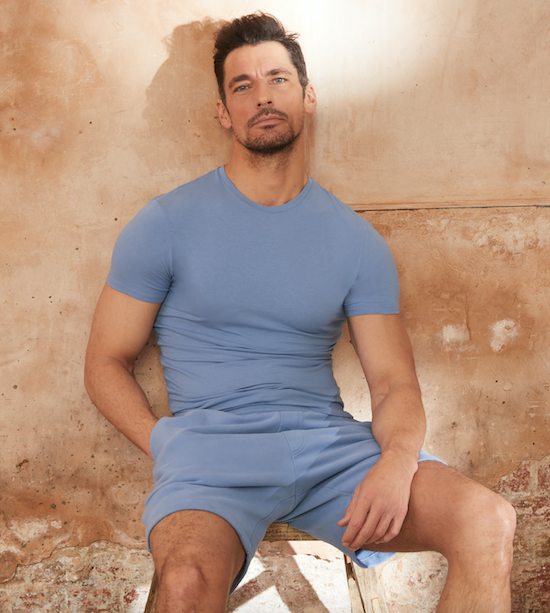 What makes a celebrity brand a ‘celebrity brand’? Does the celebrity have to live and breathe the brand, or can they discreetly linger in the background as a footnote of its ownership and still expect it to be successful?
What makes a celebrity brand a ‘celebrity brand’? Does the celebrity have to live and breathe the brand, or can they discreetly linger in the background as a footnote of its ownership and still expect it to be successful?
Irish actor, Jamie Dornan, recently announced the launch of his new menswear brand, Eleven Eleven, to his 3 million Instagram followers. Receiving over 420K likes, the post featured snapshots of Dornan wearing the new basics-focussed menswear label with text saying, "I hate shopping and want all men to dress like me. So my mate and I have created a timeless capsule wardrobe over at @thisiseleven_eleven.
"Have a look and buy yourself/boyfriend/husband/lover/ex/brother/stranger something that he’ll always look good in. #thisiseleveneleven #capsulewardrobe”.
The mate in question, and fellow owner, is Jolyon Bohling, who has a background of launching celebrity and influencer brands. A marketing professional with 25 years’ experience, Bohling is the founder of ‘Group Seventy One' which “create and support brands from inception through design and production and onto D2C channels”.
Left - David Gandy wearing his own Wellwear brand
The Eleven Eleven brand currently has 11K followers on Instagram, but the brand doesn’t feature Dornan’s image anywhere on its channels or website. It is worth noting that Dornan started his career as a fashion model, even making it to the heady heights of being a scantily clad Calvin Klein underwear model.
Eleven Eleven states on its website, “Our aim is to make men’s staple products that last, that are thought through in design and detailing, that can be worn alone or together, that can be dressed up or down.
“Eleven Eleven was born out of having to visit many different shops to pull together our wardrobe basics. It was born out of a need to provide strong, interchangeable, simple colour palettes without costing the earth.”
The brand currently offers polo shirts for £45, long sleeve polos for £50, T-shirts for £30, pique shirts for £52, slim fit shirts for £75, chinos for £75 and jumpers for £85.
Confusingly, there are at least two other brands with the Eleven Eleven name. One is called 11.11 / ELEVEN ELEVEN and is sold at matchesfashion.com and another is called eleven eleven fashion. With his background in modelling and, clearly, a huge fan base, is it a mis-step for Dornan to not feature heavily in his new brand’s imagery?
When people buy into celebrity brands they are buying into that person’s image and style. Is it a mistake not to front the campaign and promote the brand yourself and stand by it?
Launching any fashion brand is hard right now, not taking this huge advantage feels like an error.
Recent celebrity brands to run into trouble include Alexa Chung’s namesake brand, which was recently wound up with a loss of more than £11million, Liam Gallagher’s Pretty Green which was sold to JD Sports in April 2019 after entering administration with reported debts of £18million and David Beckham’s Kent & Curwen which ceased trading in Nov. 2021. David Beckham bought a stake in the brand in 2016 through his Seven Global company and had ended his partnership with Kent & Curwen previously in April 2020.
Gallagher was rarely pictured wearing his indie-inspired label while Chung’s was priced considerably higher than most of her fan base could afford. For Chung it was difficult for her to remain the girl to watch in her late 30s, especially when the social scene had been completely shut down during Covid.
One recent celebrity launch with the name firmly in front of the camera is David Gandy’s Wellwear, “a world-first concept bringing apparel and well-being together in a lifestyle brand that fuses fashion, function and feeling based on the scientific benefits of wearing soft, comfortable clothing.”
The model told TheIndustry.fashion, “I have never been someone to just put my name or face to something then walk away. I have to believe in something and be fully immersed in the process; my collaborations with M&S and Aspinal are examples of this.” he says. “Starting my own label is one of the last big things I wanted to achieve in the fashion industry, and one that I knew would be incredibly hard to do, so knowledge and timing had to be just right.”
Gandy stars in and fronts his brand’s imagery and social media alongside other models.
“For me, it is a little different as I have come from the modelling world. This is what people have come to know me for, and the Wellwear team believed it’s what people still wanted to see while we are building our audience.” says Gandy. “But I didn’t want the brand to solely be about me. I wanted to use our Wellwear platform to give other upcoming talent the opportunity to be the face of the brand, and grow with us as we do. I want Wellwear to inspire all ages and demographics. Eventually, my vision is for them to take over all the campaigns and Wellwear to become its own entity, rather than always be linked to me visually.” he says.
What does Gandy think about other celebrity brands minus their celebrity’s image?
“It’s each to their own as there is not a right or a wrong way.” he says. “You can look at many top designers with their own brands i.e. Tom Ford or Ralph Lauren. Sometimes they put themselves in the campaign and creative, and sometimes they don’t.
“You can still be the spokesperson, face and founder of a brand without having to be in the creative visually. The one advantage of founding your own brand is that you can make those decisions. But, have to remember if you get those decisions wrong, there is no blaming anyone else, that’s the responsibility you have.” he says.
It can be difficult for celebrities to 100% commit to wearing their own labels when they have lucrative contracts with other brands, but, wearing other labels often confuses consumers and questions how much input they have in their own label and how much they actually own of it. It’s like when A instead of his own label. It sent the message that his eponymous menswear was inferior or not good enough. If you have your own label why would you not make something you wanted to wear?
Discreet celebrity can work. One successful brand which has the celebrity founders firmly in the background is the super expensive, The Row. Almost cult-like in status, The Row was established in 2006 by twins Ashley Olsen and Mary-Kate Olsen and has stuck to its format of ultra-luxe, minimal fashion. The twins keep a rarefied distance and a nun-like silence around their label.
Another is Totême. Founded in 2014 by Swedish fashion blogger, fashion journalist, Elin Kling. She stays firmly in the background and has created a buzz with a clear point of view and design DNA.
Victoria Beckham on the other hand has found it difficult. She has tried to stay aloof, but has struggled. She started with the wrong categories. She should have followed Tom Ford’s lead and opened with beauty and sunglasses. You need to produce something people can buy into. She has recently reduced her prices by almost 40% by switching to simpler silhouettes and fewer embellished fabrics. The brand launched in 2008 with many consecutive years of no profits.
Other recent discreet celeb. brands to launch include Coldplay’s Guy Berryman’s ‘Applied Art Forms’, but he has less of a public image to put into the brand.
The undisputed queens of self-promotion are the Kardashians. Kim Kardashian launched her Skims label in September 2019 and it sold out in minutes. She has tapped into the expertise of Frame founder, Jens Grede, who has also partnered with her sister, Khloe with Good American. Kim K is happy to front the campaign for her shapewear brand and her image is now synonymous with the Skims brand.
Over in the UK, Trinny Woodall’s almost religious promotion of beauty brand ‘Trinny London’ has railroaded it into people’s consciousness. Starring in her campaigns, her almost QVC-like self-promotion has made a gross profit of £27.4million in the year to March 2021, a massive increase on the previous year's £8.5million. She understands the competitive nature of the beauty business and also the need to swear by your products.
Today, you need to be gratuitous in your promotion. American almost. British politeness won’t cut it. People need to be continually reminded you have a brand, you stand by your brand and you love your brand. You wouldn’t wear or use anything else. Without buying it, you are missing out, that should be the message, loud and proud.
Having a celebrity front a brand is a huge advantage. Them not wearing it or fronting the brand seems like a huge opportunity wasted, especially given the increased competitiveness of social media and direct to consumer selling.
It is rather difficult to sell a brand that you have backed if you are never seen in it. People want to know why and see it as a negative. Celebrities have to get involved. If you don’t wear the product, the signal is you don’t like it and why the hell would somebody else buy it?
Buy TheChicGeek's latest book FashionWankers - HERE
Check out TheChicGeek's new shop of fabulous plants & books - Give me Penis Cactus!
The Gen-Z ‘Contemporary Vintage’ Hard Sell
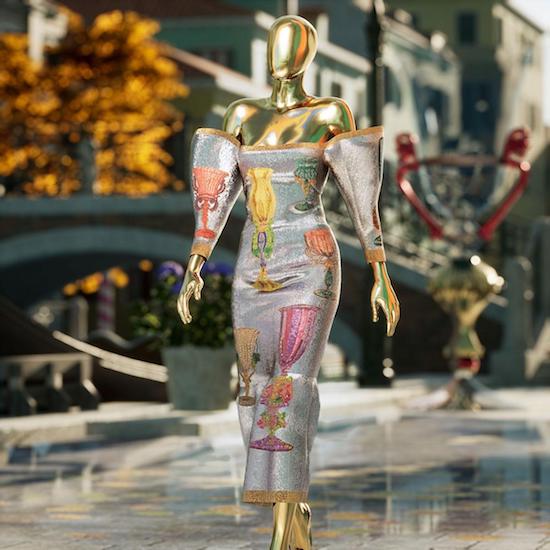
There was a time when buying fashion was solely an investment in yourself. You bought fashion, at varying price points, thinking little or nothing of its intrinsic value after you’d finished using or wearing it. If it was lucky it would make a few pounds at a local charity shop after being donated. It was only very special showpieces or clothing worn by famous people that held any real value.
Left - Dolce & Gabbana sold its last Alta Moda Couture collection in NFT format
Today, designer fashion is being spun as ‘Contemporary Vintage’ or ‘Future Vintage’. It is being sold on the promise that it will retain some type of value or even increase. A generation of younger people are being asked to pay increasing prices for trainers and clothes on the pretence that they are an astute investment. Sounding like a giant Ponzi scheme, and adding in things like NFTs, are we seeing a new generation being hoodwinked into ‘investing’ into fashion?
“I think it's a complex landscape here, almost half of the UK Generation Z saw some negative alteration to their employment through the pandemic period, and for this generation, it's increasingly hard to get into meaningful work.” says Petah Marian, founder of Future Narrative, a retail, culture and consumer trends expert.
“This sense that the system is rigged against them is leading to all sorts of speculative behaviours, be it trying to get access to limited-edition trainers to flip, or in some cases crypto currencies. Some people do make considerable amounts of money out of selling items, but, unless you know what's going to hold value, it's a risky game, as a lot of the future value lies in how well it will resonate later on.” she says.
In November, London designer fashion retailer, Machine-A, with self-described 'contemporary vintage’ e-commerce site Byronesque, launched a vintage area selling archival and rare runway pieces from the like of Rick Owens and Raf Simons.
“As I understand it, contemporary vintage is just a new way of marketing vintage items. The way that Machine B is positioning itself is that the contemporary vintage selection will be key vintage items from a series of iconic designers that have a certain cult appeal.” says Marian.
Called Machine-B, it launched at the Machine-A store in Soho and online. What was interesting was how Machine-A was using these archival pieces to promote its other contemporary designer offering and labelling it as ‘future vintage’. This speculative retail approach included small and lesser known brands such as Stefan Cooke and Kiki Kostadinov.
Kerry Taylor, founder of Kerry Taylor Auctions, the world's leading auction house specialising in vintage fashion, fine antique costume and textiles, says, “I have concerns about people purchasing trainers for hundreds of thousands of dollars – when we know that items made from rubber or plastics in the 1960s have started to revert/disintegrate. High quality artisanal items such as Hermès handbags however are probably only going to increase.” she says. “I would trust vintage vintage as it has an established track record rather than ‘contemporary vintage’ which is a bit of a contradiction in terms. We have no idea of the marketing hype will come true.” says Taylor.
Taylor thinks brands and designers are marketing their clothes and product like this to make them seem more special in a world flooded with brands and garments. If you were to ‘invest’, what would you look for?
“They should buy what they like rather than just for an investment. Investments can go up or down – but if you love a piece – then it doesn’t matter so much. Always check condition – avoid anything altered or with damage.” says Taylor.
 Marian thinks brands that have a strong and passionate fan base or items that either speak to a brand's codes or are exceptional examples of where it departs from it are more shrewd investments, as well as items that have a limited release.
Marian thinks brands that have a strong and passionate fan base or items that either speak to a brand's codes or are exceptional examples of where it departs from it are more shrewd investments, as well as items that have a limited release.
“It's part of the broader narrative around circularity and retailers slowing consumption around new items, while also generating buzz around key designers by elevating second-hand items as "archive pieces" that are special and rare.” says Marian.
Right - Burberry's first NFT collection launched in August 2021
Fashion brands are offering other avenues to invest, and making their brands look more attractive in the process. NFTs or non-fungible tokens, offer a chance to buy digital versions of an item. Individuals need to establish a digital wallet to store your cryptocurrency in order to purchase an NFT.
In June, Gucci partnered with Christie’s selling an NFT video called ‘Aria’, the title of its AW21 collection, for $25,000, while in September, Dolce & Gabbana sold an NFT couture Alta Moda suit for £740,000 at auction. The new owner also got a physical suit for that price. Dolce & Gabbana grossed $5.7 million from its first auction of NFT collectibles.
Tying fashion items and collections to NFTs raises the investment levels, but are NFTs likely to be a good long-term investment?
“It's very early to say what the mass uptake will look like.” says Marian. “There's a passionate community of collectors that are driving up the value of NFTs at the moment, but I can't say what the long term value of the current releases of NFTs. I think NFTs are here for the longer term, but it's very early to say what the value or the market will look like for individual assets in a year or two years from now yet.” she says.
Add the growing noise around the Metaverse - the British Fashion Council (BFC) recently announced a brand new category as part of The Fashion Awards 2021—the first ever Fashion Award for Metaverse Design exclusively with Roblox - and the way digital and physical items are blurring, these new ways of owning or consuming as item are selling themselves as investment opportunities to a younger and more engaged consumer.
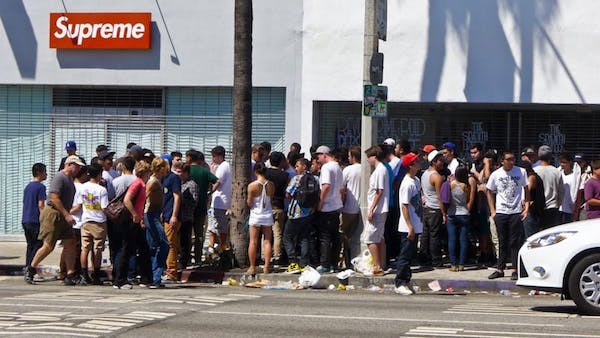 All investments are speculative. By linking and promoting positive examples of fashion items increasing in or holding their value, brands are cleverly giving the illusion that it is a certain. This is targeted at the younger consumer queuing at stores in Soho or entering ballots for items happy to pay significant sums of money with the idea lurking in the background that they will be able to resell it at some point or even flip at a profit. Websites like Stock X continue to propel the hyped hysteria.
All investments are speculative. By linking and promoting positive examples of fashion items increasing in or holding their value, brands are cleverly giving the illusion that it is a certain. This is targeted at the younger consumer queuing at stores in Soho or entering ballots for items happy to pay significant sums of money with the idea lurking in the background that they will be able to resell it at some point or even flip at a profit. Websites like Stock X continue to propel the hyped hysteria.
Left - Hyped kids? Luxury brands are invested in giving the perception their goods will retain or even increase their value to younger, Gen Z consumers
Fashion has never really been a serious investment before. Fashion, in its nature, is fickle and unpredictable. Implying that something is resellable at a price close to what you paid for it and/or a solid investment is another pull brands are using to activate the purchasing power of their expensive products. It doesn’t feel like you’re chucking your money away like it did in the past to a generation more careful with money. This bubble is getting bigger and we all know what happens to bubbles when they get too big.
Buy TheChicGeek's latest book FashionWankers - HERE
Check out TheChicGeek's new shop of fabulous plants & books - Give me Penis Cactus!